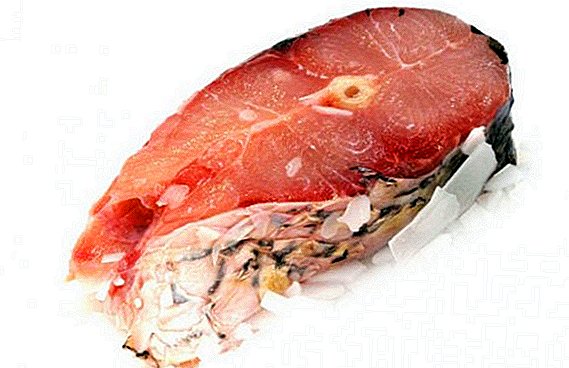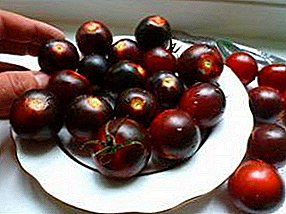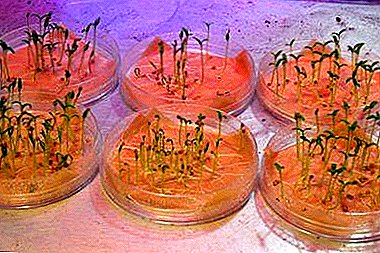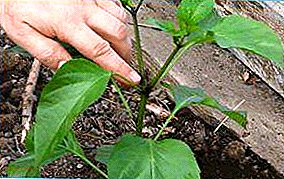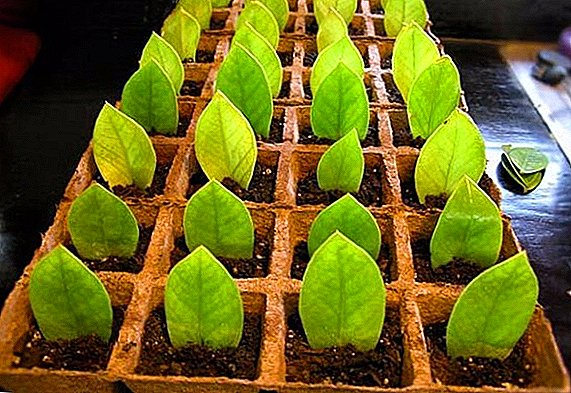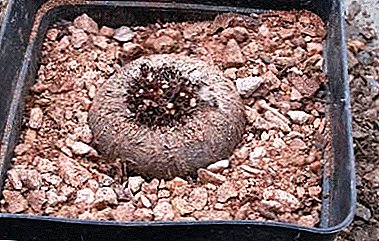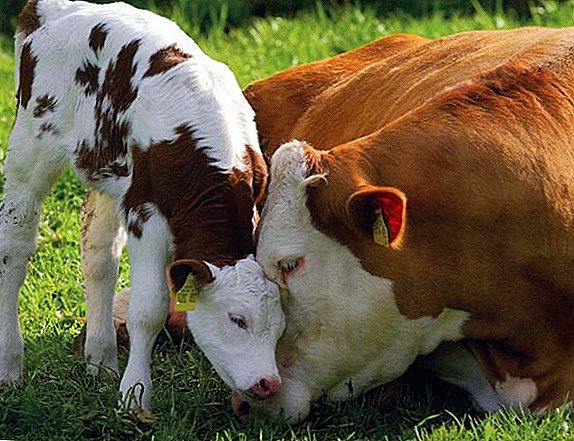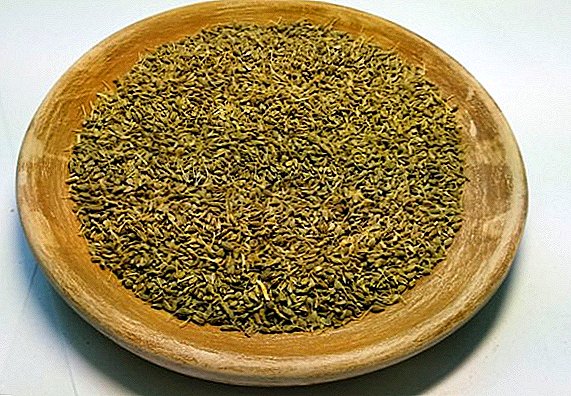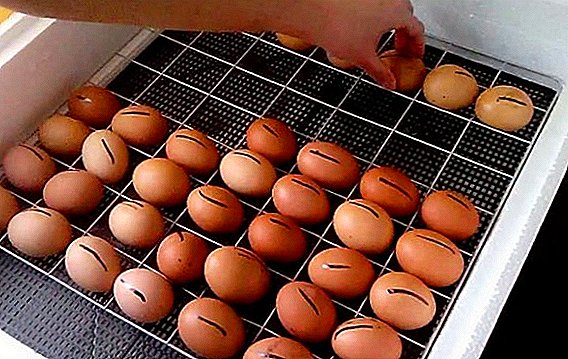 Before laying eggs in an incubator, many novice poultry farmers are faced with the question of whether they need to be washed. It should be understood that the incubation material - is, above all, a living organism, which must be handled as carefully and carefully as possible. Disinfection in this case will save offspring from diseases that can be caused by viruses and bacteria that multiply intensively on the shell. How to wash the material for incubation and what to use for this, let's see.
Before laying eggs in an incubator, many novice poultry farmers are faced with the question of whether they need to be washed. It should be understood that the incubation material - is, above all, a living organism, which must be handled as carefully and carefully as possible. Disinfection in this case will save offspring from diseases that can be caused by viruses and bacteria that multiply intensively on the shell. How to wash the material for incubation and what to use for this, let's see.
How to select suitable eggs
As you know, not all eggs are suitable for incubation. The main properties of the incubation material are its freshness and fertilization. In addition, take into account its size: the average size of the chicken - 60 g, duck - 90 g, goose - 140 g.
It will be useful for you to learn about the features of incubation of chicken, duck, goose and turkey eggs, as well as quail eggs, guinea fowl, and indouki.
It is impractical to put smaller eggs in the incubator, since it is unlikely that they will produce the offspring.  For the incubation process itself, you should choose a material of the same size, since it is easier for him to choose the optimal conditions. It is possible to determine the suitability of egg specimens by several aspects: external signs and through a special apparatus, an ovoscope.
For the incubation process itself, you should choose a material of the same size, since it is easier for him to choose the optimal conditions. It is possible to determine the suitability of egg specimens by several aspects: external signs and through a special apparatus, an ovoscope.
Find out what should be an ovoscope and how is ovoscoping going.
External signs of quality material:
- the egg has a smooth, fairly durable surface, without cracks, scratches, mechanical damage;
- the surface haze speaks of the freshness of the product, and the shine, on the contrary, indicates that it is old;
- the product has an oval shape: as practice shows, weak chickens hatch from eggs of elongated or too round shape.
Did you know? You can check the freshness of the material with ordinary water. For the experiment, the egg should be put in a glass of water: fresh ones turn sideways at the bottom, weekly ones - lift up with a blunt end, two-three-week ones rise - wholly rise upwards. For incubation, you should choose only fresh product, 2-3 days.

After a visual inspection, you must check the selected specimen with an ovoscope. This device can be purchased in specialized stores or make your own from an ordinary lamp.
When viewed with an ovoskop, attention should be paid to such signs:
- in a quality product, the yolk has a fuzzy shape and is located approximately in the middle; besides, when the egg turns, it moves slightly: in the old, the yolk moves quickly, has clear outlines, is located near the shell;
- at the blunt end of the egg should be visible a dark spot - an air chamber measuring 2 mm; when turning the product, the camera remains stationary, in stale instances the camera has increased dimensions;
- the presence of strips of light shade on the shell indicates violations in the oviduct of the chicken;
- spots of a lighter shade on the shell indicate calcium deficiency;
- the black spots in the middle are signs of product fading, such material in the incubator will simply explode.

Egg storage until incubation
Proper storage of egg specimens before incubation makes it possible to significantly increase the hatchability of chicks.
Do I need to wash
The question of washing eggs before laying them in the incubator is quite controversial. Some poultry farmers agree that washing destroys the protective shell on the shell, resulting in the ingestion of pathogens that adversely affect future chicks.
The fact that the hen itself never washes eggs before incubation is also significant.
On the other hand, in poultry farms and large farms, the treatment of incubation material before laying has been practiced for many years.
Wash or not wash the eggs before laying in the incubator: video
However, this does not mean the traditional washing with water, but competent disinfection of the product, which protects it from viruses and bacteria, and also prevents the development of many diseases in young animals.
How to disinfect
For disinfection use special commercial antiseptics, for example, "Monclavit-1", "Brokarsept" or a weak solution of formalin, potassium permanganate or 1-1.5% hydrogen peroxide. Folk "craftsmen" sometimes practice the processing of the shell with vinegar.
For disinfection of eggs before incubation also use the drug "Brovadez-plus".
There are no contraindications to this method, so if there were no other disinfectants, you can try it.
Carry out the processing procedure should be extremely careful:
- The temperature of the solution of potassium permanganate should not be below + 30 ° C, formalin - + 22-27 ° C, hydrogen peroxide - + 35-37 ° C.
- Eggs should be immersed in a grid-shaped container, carefully lowered into the solution and turned until they are clean of dirt. Soaking time should not exceed 5 minutes, the best option is 2-3 minutes.
- After soaking the product is taken out and laid out on a clean towel, do not wipe.
- Dried specimens are put in clean trays.

Important! It is strictly forbidden to wash the material under running tap water or to scrub the dirt with a brush or knife. It can damage the egg inside and out.
How and where to store
First of all, you need to remember that to save the product before laying more than 6 days, it is impossible. It is also forbidden to keep it in the refrigerator. The most optimal storage method is to place the material on a sheet of plywood in the same row. It is recommended to cut holes in the sheet, where the eggs should be folded up with a sharp end.
The temperature regime in the room should vary within + 6-12 ° С, and the air humidity - 65-70%. It is necessary to organize good ventilation. It is impossible to save material in bulk, putting plywood sheets on top of each other, as this significantly reduces the hatchability of chickens.
Positive for the shelf life of the product and the hatchability of chicks is affected by periodic inversion. You can also wrap each copy in a plastic bag or plastic wrap to stop the flow of oxygen. 
For this purpose, in large poultry farms, before incubation, the material is stored in special chambers filled with nitrogen or carbon dioxide.
How to prepare an egg for incubation
The preparation of the incubation material before its laying is also of great importance for increasing the percentage of hatching of chicks and their survival.
Before sending the eggs to the incubator, you must:
- Thoroughly review each for the presence of cracks, chips, damage. Remove unsuitable.
- 8-10 hours before incubation, take them to the room where the thermometer shows from +21 to +27 ° С. At a lower temperature, the development of the embryo will slow down, while at a higher temperature, the embryo will start to develop incorrectly.
- Make disinfection. If it was carried out before storage, then each copy should be wiped with a soft cloth moistened with an antiseptic solution. Dry well on a clean towel.

Important! It is forbidden to put wet, wet or cold specimens into the incubator, as this may disturb the moisture level in the device, which, in turn, will adversely affect hatchability.
Preparing the incubator for laying eggs
Careful preparation also requires the incubator itself. Before laying the material it is necessary to treat the incubator and the hatchery with a disinfectant solution. For several days it is recommended to check the unit for serviceability, correct functioning of temperature and humidity modes, operation of mechanisms.
It will be useful for you to find out which modern incubators are among the best, how to correctly choose a household incubator, how to make an incubator from an old refrigerator, and also about the features of using such incubators such as "Laying", "Blitz", "Cinderella", "Ideal hen" .
If the incubator does not have an automatic or mechanical rotation function, then on each egg on both sides you need to make marks that will help track the correctness of the rotations.
After the material has been sent to the incubator, a bookmark calendar should be drawn up, in which the time, date, period of incubation and the date of the next ovoscoping should be indicated. 
Did you know? On the surface of the shell there are 17 thousand microscopic pores through which various pathogenic organisms can penetrate. For this reason, it is not recommended to leave them in hermetically sealed packaging, as well as to store them near strongly smelling products.
Features of the preparatory process in poultry
The breeding of offspring in all types of poultry, although carried out in a similar way, still has some nuances associated with the size of eggs.
Goose eggs
Goose eggs are distinguished by their large size, weight, and the presence in their composition of a large amount of fat. In this regard, you need to be able to properly handle them. Immediately after the laying process, the egg temperature is approximately + 40-41 ° C.
Gradually cooling, it, through the pores in the shell, begins to accumulate a lot of dirt and microorganisms from the external environment. Microbes and bacteria quickly penetrate deeper than they can negatively affect the incubation process. 
That is why goose products, like no other, need to be disinfected, which is carried out 2 hours after laying.
Important! If the incubation is planned not to take place immediately after collecting the material, then it is recommended to keep it in a room with temperature indicators of + 8-18 ° С and a humidity level of 75-80%.
Goose specimens are laid in a horizontal position, gradually raising the temperature to + 37.5-38 ° C. Heating is necessary to alternate every 10-15 minutes with air cooling and humidification from a spray bottle. Such manipulations are carried out twice a day.
Duck eggs
In breeding duck offspring also has its own nuances. Since the bird belongs to the waterfowl, its eggs contain a lot of water and very little fat. This creates some problems for the poultry farmers, since the material in the incubator should be periodically cooled. 
In the process of incubation, it is necessary to adhere to the temperature regime of +38 ° C and carry out a two-time ventilation (in the morning and in the evening), alternating with moistening.
Duck eggs, in comparison with others, are the dirtiest, therefore they need to be treated with a weak solution of potassium permanganate or hydrogen peroxide. In case of heavy dirt, the product may be rubbed with a soft sponge.
Turkey eggs
Traditionally, preparation for laying of turkey eggs begins with their disinfection. To do this, use special purchase tools or solutions of potassium permanganate, hydrogen peroxide. Incubation of the material is carried out at a temperature of + 37.5-38 ° C and humidity of 60-65%.
Rotate instances recommended up to six times a day. On the eighth day after laying, you should conduct an examination by means of an ovoscope and remove embryos without signs of the development of the circulatory system. 
The process of selecting, storing, disinfecting and laying eggs in an incubator should be treated with special attention and responsibility, because the percentage of nested chicks will depend on the accuracy and literacy of the work.
Successful incubation is easy to achieve, the main thing is to clearly follow all the instructions described and minimize all possible errors.
Feedback from network users




